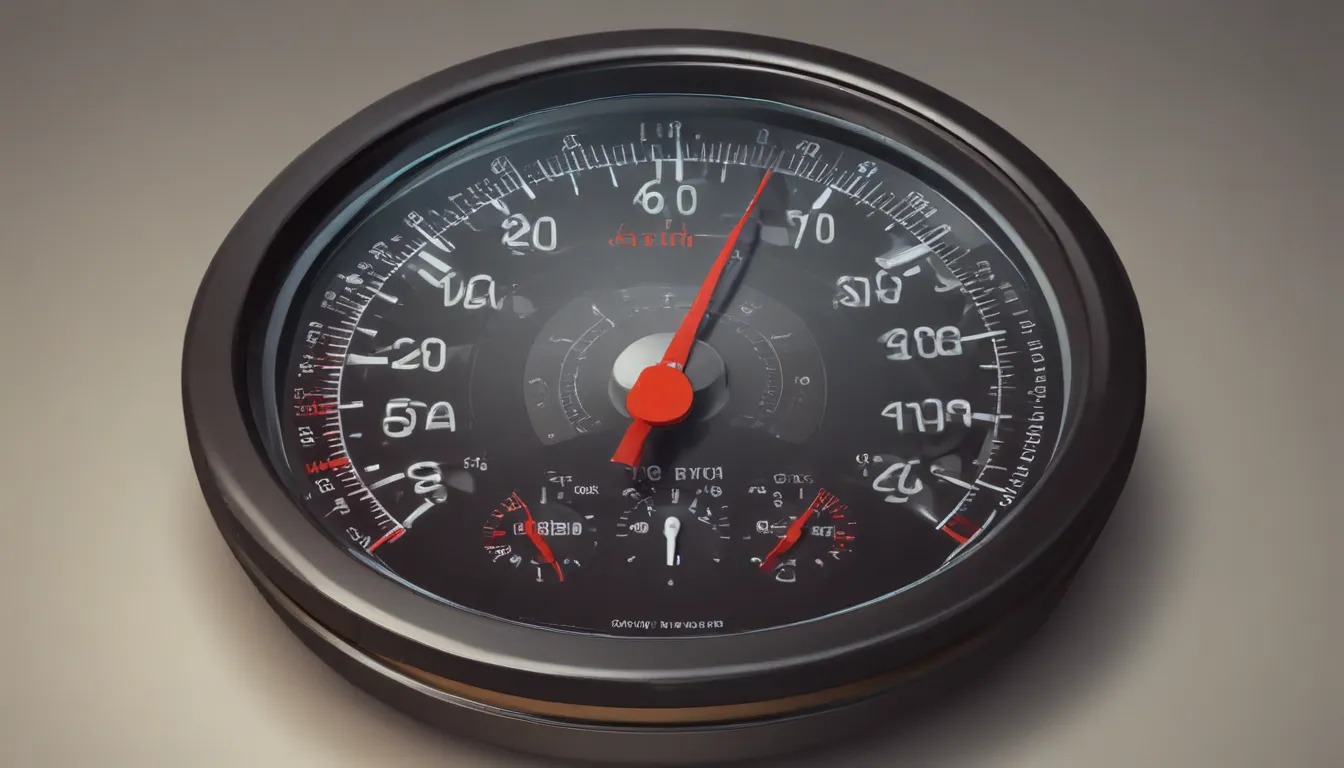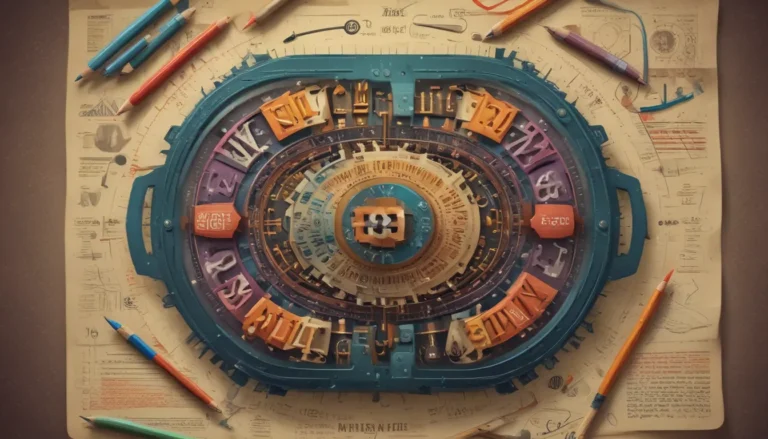A Note About Images: The images used in our articles are for illustration purposes only and may not exactly match the content. They are meant to engage readers, but the text should be relied upon for accurate information.
Have you ever wondered how pressure is measured accurately in various industries and fields? Enter the fascinating world of manometers – scientific instruments that have been pivotal in ensuring precise readings and system efficiency. From their historical origins to modern advancements, manometers have played a crucial role in quantifying the force exerted by fluids, whether in gas or liquid form.
Key Takeaways:
- Manometers are indispensable tools for measuring pressure in healthcare, industries, and scientific research, ensuring safety and efficiency.
- The invention of the manometer in the 17th century revolutionized pressure measurement, and ongoing technological advancements continue to enhance their accuracy and convenience.
Unveiling the History: The Birth of the Manometer
The manometer, a device essential for measuring pressure, was born in the 17th century, credited to Italian physicist Evangelista Torricelli.
Exploring Varieties: An Overview of Types of Manometers
Dive into the world of manometers with various types such as the classic U-tube manometer, the innovative inclined tube manometer, and the efficient Bourdon gauge.
Bridging the Gap: Measuring Pressure Difference with Manometers
Manometers excel at measuring pressure differentials between two points, crucial in fluid systems and gas flow applications.
The Beauty of U-tube Manometers
Discover the simplicity behind the U-tube manometer – a classic design featuring a vertical tube filled with liquid, typically mercury, connected to the system under measurement.
Embracing Innovation: The Inclined Tube Manometers
Savor the convenience of inclined tube manometers, featuring tubes set at specific angles to simplify pressure readings in a variety of applications.
Keeping Health in Check: Manometers in Healthcare
Witness the significant role of manometers in healthcare as they accurately measure blood pressure, both manually and through electronic devices.
Powering Industries: Manometers in Industrial Applications
Explore the widespread use of manometers in industries like oil and gas, chemical, and HVAC, where they monitor and regulate pressure levels effectively.
Unraveling Mysteries: Vacuum Measurement with Manometers
Delve into the realm of vacuum pressure measurement, where manometers are indispensable for applications involving vacuum systems and pumps.
Finding Form: The Bourdon Gauge and Its Significance
The Bourdon gauge, a unique manometer utilizing a curved tube for pressure measurement, finds its place in various pressure gauge applications.
Embracing the Digital Era: The Rise of Digital Manometers
Witness the technological leap with digital manometers, known for their accuracy, user-friendliness, and digital readouts, setting a new standard in pressure measurement.
Ensuring Precision: The Calibration Process of Manometers
Discover the importance of periodic calibration for manometers, ensuring accuracy through calibrated equipment and standards.
Navigating Differences: Understanding Differential Pressure Manometers
These specialized manometers precisely measure pressure variations between two points, widely employed in HVAC systems for efficient operation.
Flying High: Manometers in Passenger Aircraft
Manometers prove indispensable in aircraft for measuring cabin pressure, ensuring a safe, comfortable environment for passengers and crew.
Predicting the Future: Manometers in Meteorology
Meteorologists rely on manometers to measure air pressure, a key parameter essential for accurate weather forecasting.
Driving Discoveries: Manometers in Chemistry
Unveil the role of manometers in chemistry labs, where they regulate and measure pressure in diverse experiments and processes.
On-the-Go Measurements: Portable Handheld Manometers
Experience the convenience of portable handheld manometers, compact and lightweight devices that facilitate pressure measurements on the move across industries.
Upholding Excellence: The Significance of Manometer Accuracy
Acknowledge the vital role of accurate pressure measurements in ensuring safety and efficiency across various applications and systems.
A Glimpse into the Future: Advances in Manometer Technology
Get a sneak peek at the future developments in manometer technology, promising enhanced precision and advancement across industries.
Delving Deeper: Understanding the Impact of Manometers
These intriguing facts shed light on the significance of manometers across diverse industries, emphasizing their role in maintaining safety, efficiency, and accuracy. The evolution of manometers from their 17th-century origins to the digital marvels of today signifies a remarkable journey of technological progress and innovation.
Final Thoughts: Celebrating Manometers as Essential Tools
Manometers stand as fascinating devices vital for pressure measurement in various fields and applications, safeguarding safety and efficiency in pressure-dependent systems. Their diverse types and designs, from traditional to modern digital variants, cater to a broad spectrum of applications. Whether monitoring gas or liquid pressure, manometers offer reliable and precise results indispensable in engineering, aviation, healthcare, and beyond.
Understanding the workings of manometers, their types, limitations, and calibration requirements is paramount for professionals in pressure measurement-related fields. Armed with this knowledge, individuals can make informed decisions and ensure accurate readings, enhancing operational efficiency and safety.
As you encounter the world of manometers and pressure measurement, let these fascinating facts deepen your appreciation for this essential tool and its rich history.
FAQs:
1. What is a manometer?
A manometer is a device used for measuring pressure, typically comprising a fluid-filled tube and a scale for pressure readings.
2. What are the types of manometers?
Manometers come in various types such as U-tube manometers, inclined tube manometers, and digital manometers, each serving specific purposes.
3. How does a manometer operate?
Operating on the principles of hydrostatic pressure, a manometer’s fluid level shifts in response to applied pressure, indicating the measured pressure.
4. What are the common applications of manometers?
Manometers find applications in HVAC systems, medical devices, industrial processes, aircraft instruments, and scientific research, among others.
5. How accurate are manometer readings?
The accuracy of manometer readings depends on factors like the type, calibration, and operator expertise. Well-maintained and calibrated manometers can provide precise measurements within a designated range.
6. How often should manometers be calibrated?
Regular calibration, typically recommended annually or as per manufacturer guidelines, ensures the accuracy and reliability of manometer readings.
7. Can manometers measure both gas and liquid pressure?
Yes, manometers are versatile devices capable of measuring pressure in both gas and liquid mediums, provided the appropriate type is used for the medium being measured.
Explore the vast world of manometers, where precision and innovation harmonize to meet the diverse pressure measurement needs of industries and applications. Embrace the journey of understanding manometers and their pivotal role in shaping a safer, more efficient world.






